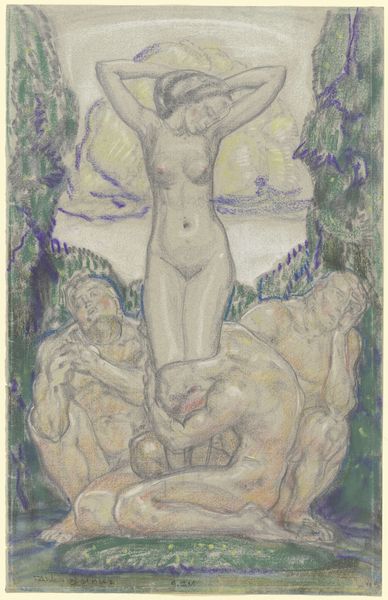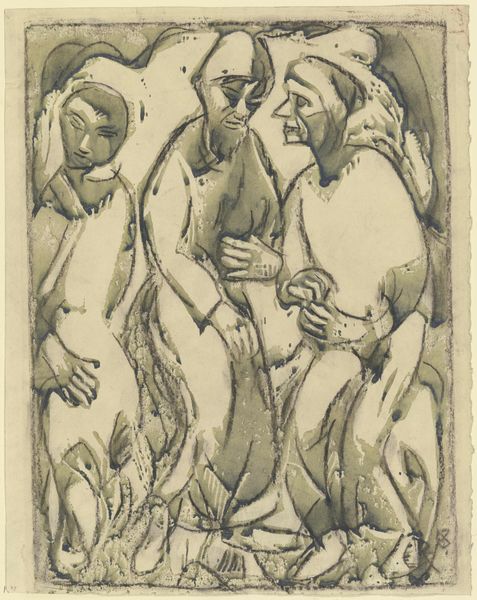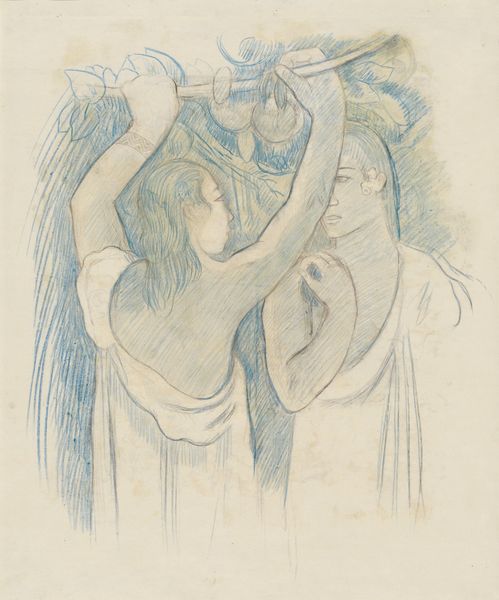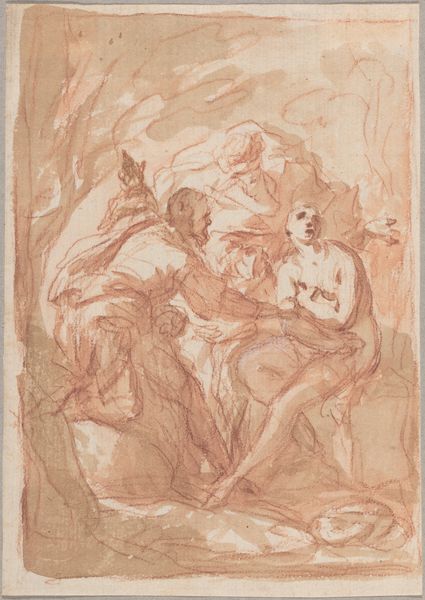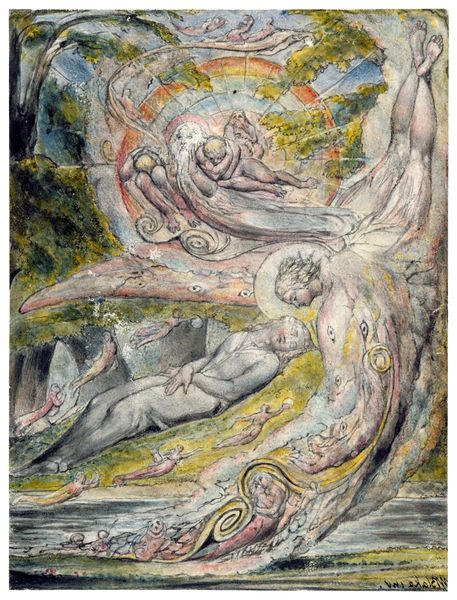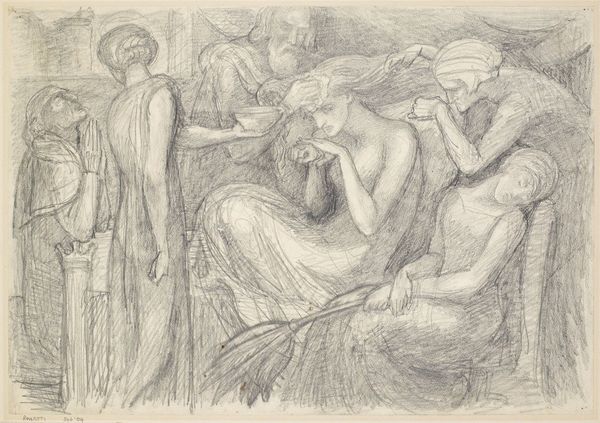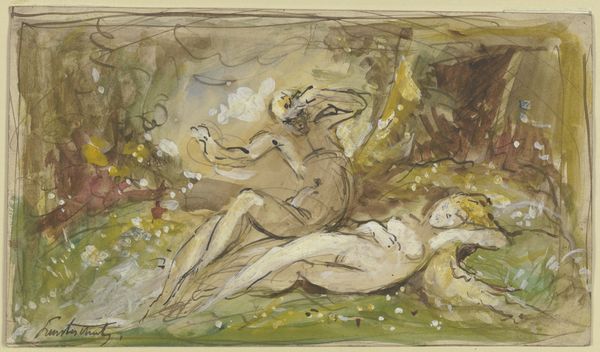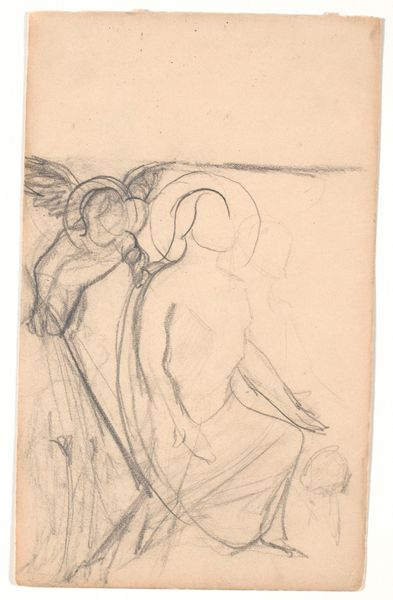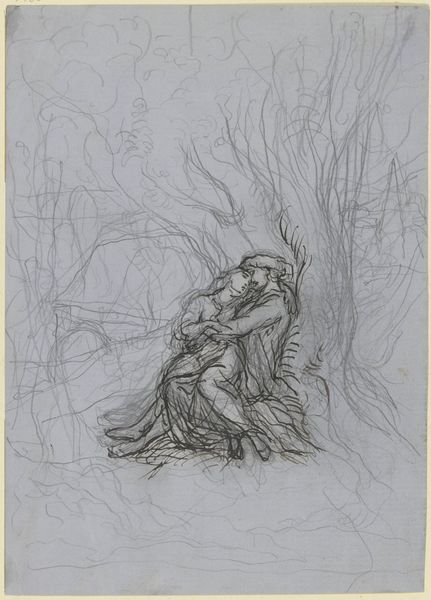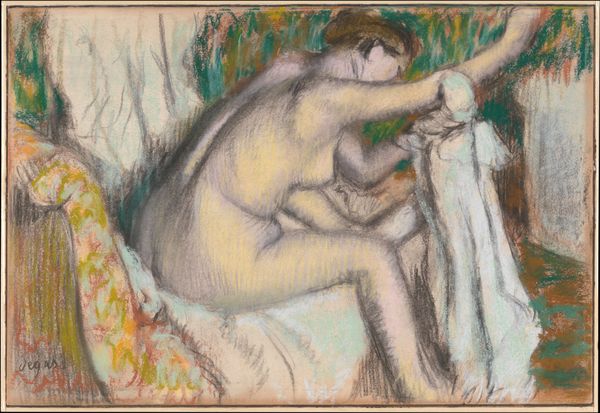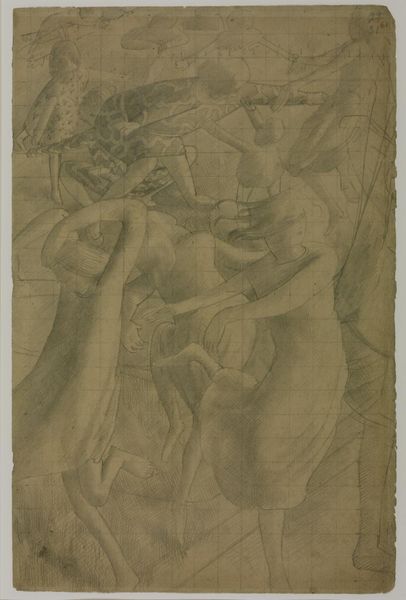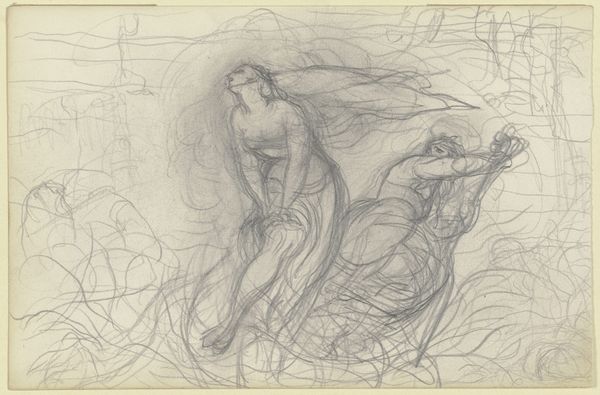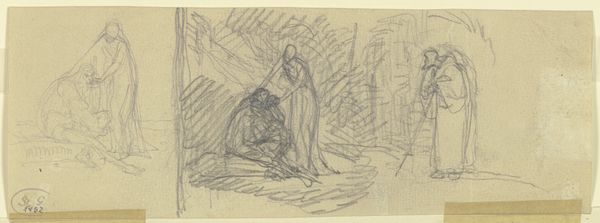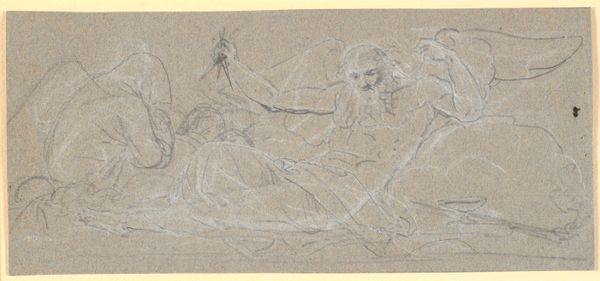
Copyright: Public Domain
Editor: This is Hermann Lismann’s "Three Women," made around 1914 using colored pencil, chalk, and pastel on paper. I’m struck by the visible texture created by the materials and the lack of blending. What do you see in this piece? Curator: I’m drawn to the relationship between the medium and the message here. Consider how Lismann, by using these accessible drawing materials, democratizes the nude figure, traditionally confined to high art. The very 'imperfect' and almost casual strokes remove a lot of pompous associations related to this theme, don't you think? Editor: That's an interesting take. So, the materials themselves are subverting traditional ideas about beauty and the representation of the female form? Curator: Precisely. The accessibility of chalk and pastel versus oil paint disrupts the established hierarchy of artistic mediums, while the application style reflects the process-driven nature of modernism. I'd also add the way he applied those media to paper instead of a canvas adds an unexpected layer of materiality to it. Are the figures made more mundane, or more universally representative by Lismann's choice of these commonplace material tools? Editor: So, by focusing on materials and process, we can understand how Lismann's artwork engages with broader questions about art, labor, and class. It makes you wonder if the ‘unfinished’ quality is a deliberate statement about the changing status of women, and their depiction at the time. Curator: Absolutely. He makes visible both the hand of the artist, and the 'everydayness' of the sitter(s). It begs questions about the power dynamic between them. It makes me question assumptions around value. Editor: I never thought about those material considerations before. Now I am going to look at other artworks differently! Curator: That’s what a good work of art, and looking closely at its process, can do for you.
Comments
No comments
Be the first to comment and join the conversation on the ultimate creative platform.
